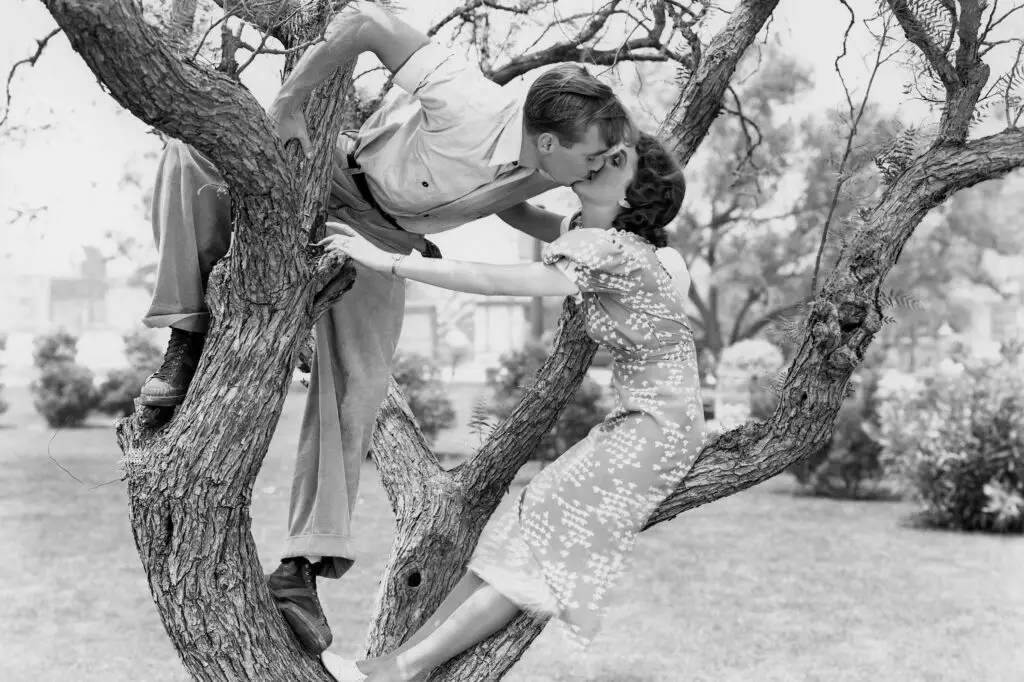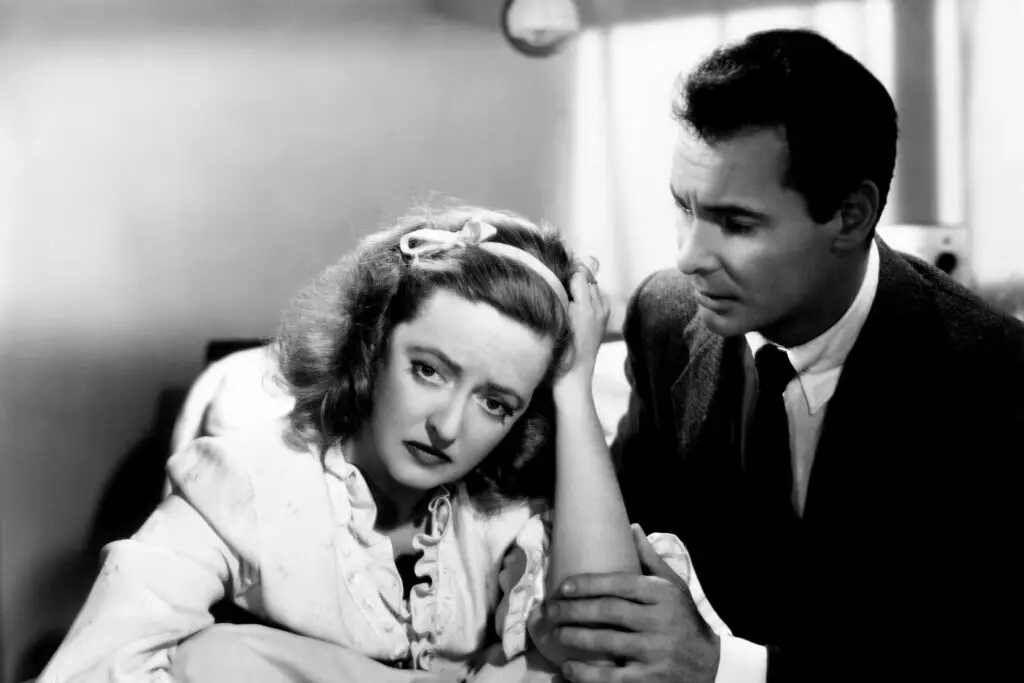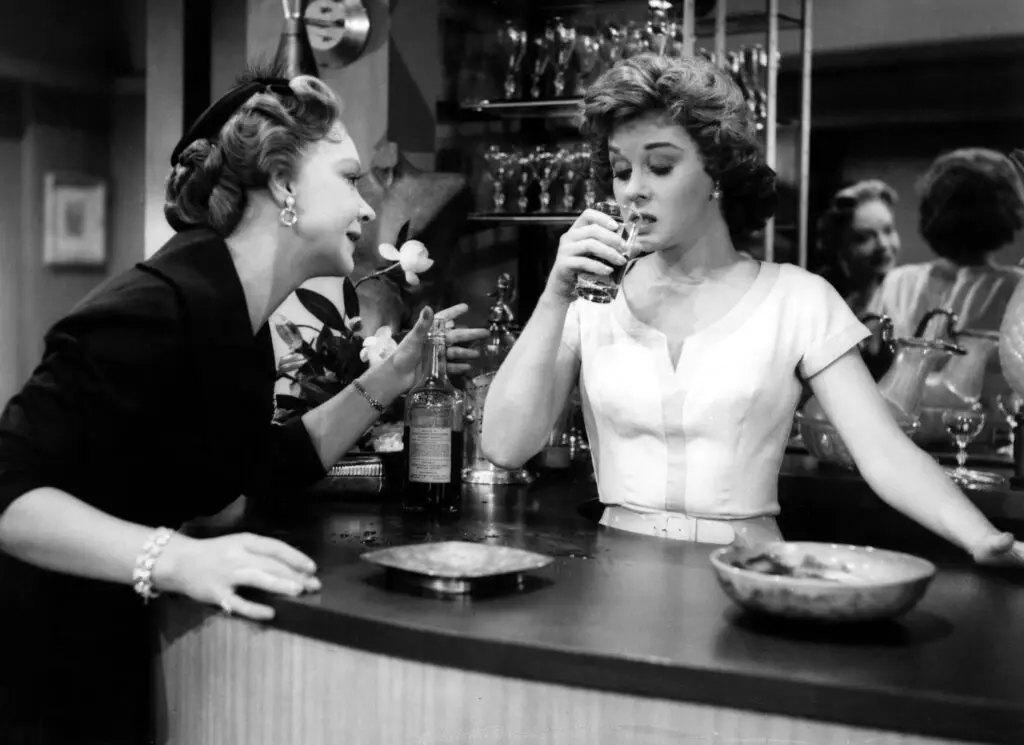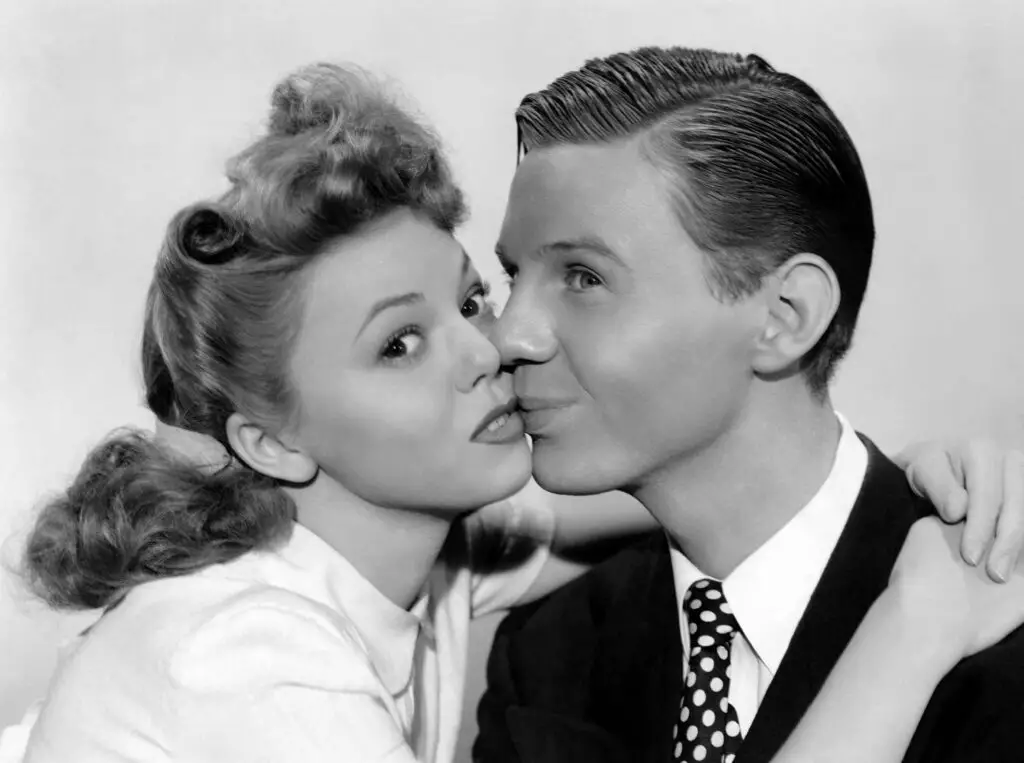1. Talking About Mental Health

Back in the 1950s, discussing mental health wasn’t just rare, it was downright taboo. If someone was struggling with anxiety, depression, or anything else under that umbrella, it was often kept quiet or brushed under the rug. People feared being labeled “crazy” or unstable, and therapy was something you’d only hear about in whispered tones. A trip to a psychiatrist might’ve been hidden from friends and even family. Emotional struggles were expected to be managed privately, and suffering in silence was considered a form of strength. If a woman expressed emotional distress, it was often chalked up to “nerves” and treated with sedatives. Men, on the other hand, were told to toughen up or distract themselves with work. It’s wild to think how far we’ve come in just a few generations says the Mental Health Foundation.
These days, therapy is something people mention in casual conversation, and mental health awareness has become a priority in schools, workplaces, and even pop culture. But in the ‘50s, even admitting you needed help could put a stigma on your entire family. Parents didn’t always know how to support a struggling child because they didn’t have the language or tools. Emotional resilience was admired, but the emotional cost was often overlooked. It’s not that people didn’t suffer back then, they just didn’t have a space to share it. And when you don’t talk about things, healing becomes a lot harder. Thankfully, the world’s become a bit more open-hearted since then adds JSTOR Daily.
2. Women Wearing Pants

Today it’s completely normal to see women in jeans, slacks, or leggings, but in the 1950s, pants on women raised a few eyebrows. Dresses and skirts were the expected uniform, especially for anything outside the home. If a woman wore pants in public, she risked being seen as rebellious or even unladylike. Even in cold weather, many women stuck to stockings and skirts just to stay within the lines of social norms. It wasn’t illegal, of course, but the judgment was real. Most schools and offices enforced strict dress codes that required skirts for girls and women. And if a woman did slip on trousers, it was often just for housework or yard chores says HuffPost.
The rise of movie stars like Katharine Hepburn and Marlene Dietrich helped challenge that norm a bit, but it took decades before pants became everyday attire for women. Some women secretly loved the comfort and freedom of pants but would only wear them behind closed doors. It’s funny to imagine a closet full of pants being a sign of quiet rebellion, but for many, it really was. It wasn’t until the ‘60s and ‘70s that this started to shift significantly. Today, a woman can walk into a boardroom or a wedding in pants and no one bats an eye. But in the ‘50s, something as simple as wearing jeans was practically revolutionary. Fashion has always been political, and this was one quiet way women pushed back adds InStyle.
3. Public Displays of Affection

Kissing in public might not even make someone glance twice today, but back in the ‘50s, it was a different story. Holding hands was about as far as most couples went outside the privacy of home or maybe a parked car. Public displays of affection, especially anything beyond a quick peck, were frowned upon and considered inappropriate. The idea of decency was deeply tied to modesty and self-restraint. You might’ve seen a couple sneak a kiss in a dark corner of the dance hall, but it wasn’t something people flaunted. Even married couples were expected to show affection in private. It was all about appearances and maintaining a sense of control in public life.
Teenagers especially were warned to keep their hands to themselves, often under the watchful eye of chaperones. Parents, teachers, and clergy made it clear that affection could lead to temptation and trouble. There was a strong sense of propriety, and anything resembling passion was seen as too forward. It sounds quaint now, but for young people in love, it was a real restriction. Today, it’s common to see couples being affectionate at the park or in restaurants without anyone giving it a second thought. But in the 1950s, even a hand resting too long on someone’s arm could spark gossip. It was all about restraint, respectability, and keeping romance out of the public eye.
4. Divorcing Your Spouse

Getting a divorce in the 1950s wasn’t just a legal matter, it was a major social scandal. Even if a marriage was unhappy or even abusive, the pressure to stay together was immense. Divorce carried a heavy stigma, especially for women, who were often blamed or pitied no matter the circumstances. People whispered about it at church or avoided the subject altogether. It wasn’t uncommon for women to stay in loveless marriages just to avoid shame or financial instability. And if children were involved, that added another layer of guilt and judgment. A divorced woman was often viewed as someone who had failed at her most important role.
Men didn’t face the same judgment, but there was still a sense that divorce meant a broken family, something to be avoided at all costs. Marriage was seen as sacred and permanent, and society reinforced that at every turn. Even Hollywood stars were expected to keep up appearances despite personal turmoil. Compare that to today, where divorce is seen as a tough but sometimes necessary step toward personal happiness. Therapy, co-parenting, and second chances are all part of the conversation now. But in the ‘50s, saying “I want out” took a level of courage many people just didn’t feel they had. Staying together for the sake of appearances was the norm, even when hearts were breaking behind closed doors.
5. Living Together Before Marriage

Cohabitation before marriage is practically expected in many circles today, but in the 1950s, it was a full-blown scandal. If a couple lived together without being married, they risked being labeled immoral or irresponsible. Neighbors would talk, families might disown, and landlords could even refuse to rent to “unmarried” couples. It was considered sinful in many religious communities and a sign of poor character. Women, especially, bore the brunt of the judgment, as their virtue was closely tied to whether or not they “waited” until marriage. Even engaged couples wouldn’t dare share an apartment—it was simply not done.
The belief was that living together outside of marriage invited temptation and set a bad example. It didn’t matter how in love you were or how committed you felt, without a ring, you were crossing a line. Some couples did it in secret or pretended to have separate residences, but that took a lot of effort and risk. Today, couples live together for years, buy homes, and even raise kids before ever tying the knot. But in the ‘50s, taking that step out of order could brand you for life. It was one of the clearest lines in the sand, and crossing it wasn’t taken lightly.
6. Women Drinking in Bars Alone

A woman walking into a bar alone in the 1950s was almost guaranteed to turn heads—and not in a good way. It wasn’t just uncommon, it was seen as suspect. Women who drank alone, or even with a group of female friends, were often judged harshly. People might assume they were looking for male attention or behaving “loosely.” Respectable women didn’t frequent bars without their husbands or boyfriends, and even then, they were expected to drink lightly. A cocktail or two was fine, but anything more and the whispers started. Bartenders and patrons alike treated solo female drinkers with a mix of curiosity and caution.
It’s frustrating to think that something so simple could trigger so much scrutiny. Drinking establishments were largely male spaces, and women had to tread carefully. There were exceptions, of course, like jazz clubs or dinner lounges, but even there, the social rules were thick. Women who valued their reputation often avoided bars altogether, opting instead for dinner parties or home entertaining. Fast forward to today, and it’s not unusual to see women ordering a drink on their own after work. But in the ‘50s, that kind of independence wasn’t just rare, it was risky. It was one more reminder of how gender roles shaped even the smallest parts of daily life.
7. Men Showing Emotion

In the 1950s, boys were taught early on to “man up” and keep their emotions in check. Crying, expressing fear, or even admitting sadness was seen as weak. Fathers, coaches, and even teachers pushed the idea that real men didn’t show vulnerability. Emotions were for women, and a man’s role was to be strong, stoic, and in control. That kind of pressure created generations of men who struggled to open up. Grief was buried, and emotional pain was handled with silence or a stiff drink. It wasn’t that men didn’t feel deeply—they just weren’t given permission to show it.
This kind of emotional suppression often led to bottled-up feelings, strained relationships, and even physical health problems. There was little room for softness, even in fatherhood or friendship. Today, emotional intelligence in men is celebrated, and vulnerability is seen as strength, not weakness. Therapy, mindfulness, and open conversations have helped change the narrative. But in the ‘50s, being a sensitive man could get you mocked or dismissed. It was all part of a culture that prized toughness over tenderness, leaving many to suffer in silence. The change didn’t happen overnight, but it’s made a world of difference.
8. Discussing Money Problems

In the ‘50s, people didn’t talk openly about money—especially not about struggling with it. Finances were a deeply private matter, and admitting you were having trouble paying bills or affording groceries was seen as shameful. There was a huge emphasis on projecting success and stability, even if that meant putting on a happy face while quietly drowning in debt. Credit cards were just starting to enter the picture, but debt was still considered something to be avoided at all costs. Asking for financial help, even from family, could cause embarrassment or resentment. People just weren’t supposed to talk about money troubles—it was considered poor manners.
Even among friends, there was little transparency about income or expenses. Keeping up appearances mattered more than being honest, and this often led to stress behind closed doors. The idealized “American Dream” image came with an unspoken expectation that you’d figure it all out on your own. Today, budgeting apps, podcasts, and financial literacy resources have opened up the conversation. People talk openly about student loans, credit card debt, and savings goals. But in the ‘50s, if your wallet was empty, you simply tightened your belt and pretended everything was fine. The silence around money made it harder to find support or solutions.
9. Talking About Sex

In the 1950s, sex was one of the most taboo topics you could bring up in polite conversation. It simply wasn’t discussed—at least not publicly and certainly not in mixed company. Parents avoided the subject entirely, schools taught vague lessons about “health,” and most young people were left to piece things together themselves. Even married couples often had very limited conversations about intimacy. The idea of sexual fulfillment, especially for women, was rarely addressed. Instead, the focus was on duty, morality, and maintaining decency. If you had questions or concerns, there weren’t many places to turn.
Books and magazines offered coded advice, but it was all wrapped in euphemisms and moral warnings. The idea of pleasure was considered risqué, and curiosity could easily be mistaken for deviance. Today, open dialogue about sex, consent, and health is considered essential. But in the ‘50s, silence was the standard, and shame lingered around anything outside the norm. Even newlyweds sometimes entered marriage with little real understanding of what to expect. That kind of hush-hush approach made it hard to develop healthy, informed attitudes about intimacy. It was a subject best left behind closed doors—and even then, often unspoken.
10. Breastfeeding in Public

Breastfeeding might be natural, but in the 1950s, doing it in public was considered borderline scandalous. Women were encouraged to feed their babies privately, either in their own homes or tucked away in a discreet corner. If a woman tried to nurse in a restaurant or park, she was often met with disapproving glances or even asked to leave. The rise of formula in that era didn’t help either, as it was marketed as a modern, scientific alternative. Breastfeeding began to be seen as old-fashioned or inconvenient. Women were expected to be modest above all else, even if it meant their baby went hungry.
This kind of social pressure led many mothers to feel ashamed or embarrassed about something that should’ve been completely normal. There were no nursing rooms, no covers, and no real support. Today, while public breastfeeding can still spark debate, it’s legally protected and widely accepted in many places. But back then, even other mothers might have judged you for doing it where someone could see. It was a lonely, uncomfortable position to be in. Breastfeeding required courage—not because it was hard, but because the culture made it controversial.
11. Left-Handedness

It’s hard to imagine now, but being left-handed was once considered a problem that needed fixing. In the 1950s, left-handed kids were often forced to switch hands in school, with teachers insisting they write with their right. Some were even punished or shamed for using their dominant hand. The belief was that left-handedness was incorrect, awkward, or even a sign of defiance. Desks, scissors, and other tools weren’t designed for lefties, making everyday tasks unnecessarily difficult. Parents sometimes went along with the correction, thinking they were helping their child fit in better.
This practice could lead to frustration, poor handwriting, and a lack of confidence in school. There was very little understanding of natural variation—right was just seen as “right.” Thankfully, that mindset has shifted over time, and left-handedness is now seen as a simple trait rather than a flaw. Left-handed people today might still find some tools inconvenient, but at least they aren’t being scolded for using the “wrong” hand. It’s one of those things that reminds you how much societal norms can shape even the most harmless habits. In the ‘50s, being left-handed was more than a quirk—it was a behavior to correct.
12. Women Speaking Up in Meetings

In the 1950s, women were expected to be quiet listeners, not vocal contributors—especially in professional settings. If a woman offered her opinion in a meeting or challenged a male colleague, she risked being seen as aggressive or out of line. The unspoken rule was that women should be agreeable, supportive, and deferential. Even highly capable women were often relegated to note-taking or background roles. Leadership was for men, and speaking up could make a woman seem pushy or unfeminine. Many women stayed silent, not because they lacked ideas, but because they knew the cost of speaking out.
Workplaces were not designed for gender equality, and there were few female mentors or allies. Those who did push boundaries were often labeled difficult or dismissed entirely. It took decades of advocacy and persistence for women to begin claiming their space in boardrooms and brainstorming sessions. Today, assertiveness is seen as a strength, and diverse voices are valued more than ever. But in the ‘50s, confidence in a woman was often mistaken for arrogance. Staying quiet wasn’t just about manners—it was about survival in a male-dominated world.
13. Men Staying Home with the Kids

If a man in the 1950s said he wanted to be a stay-at-home dad, most people would’ve laughed—or assumed something was wrong. Childcare was firmly considered women’s work, and any man who stepped into that role was often viewed as lazy, weak, or unambitious. Even taking paternity leave, if it had existed, would have been unthinkable. Fathers were expected to be providers, not diaper changers or lunch-packers. While many dads loved their kids deeply, their role was defined by breadwinning. Nurturing was something reserved for mothers, teachers, and grandmothers.
This division of labor made it hard for men to bond with their children in meaningful ways. They were often discouraged from showing affection or getting involved in day-to-day parenting. Today, stay-at-home dads are still a minority, but they’re widely accepted and often celebrated. Parenting is increasingly seen as a shared responsibility, not a gendered duty. But in the ‘50s, a dad pushing a stroller would’ve stood out—and not in a good way. It’s one more example of how rigid gender roles boxed everyone in, not just women.
14. Interracial Dating

In the 1950s, interracial dating wasn’t just frowned upon—it was illegal in many parts of the country. Laws banning interracial marriage, known as anti-miscegenation laws, were still on the books in several states. Even in places without those laws, couples faced intense social pressure, discrimination, and sometimes violence. Families often disapproved, communities ostracized them, and employers could even use it as a reason to fire someone. For many, the risk of being together publicly was just too high. Love across racial lines was seen as threatening to the social order.
Despite all that, brave couples still found ways to be together, often in secret. The Supreme Court’s 1967 Loving v. Virginia decision eventually made interracial marriage legal nationwide, but the shift in attitudes took much longer. Today, while prejudice still exists, interracial couples are far more accepted and visible. But in the ‘50s, something as simple as holding hands could lead to serious consequences. It was a painful reminder of how deep segregation ran—not just in public life, but in personal relationships too. Love had to fight extra hard just to be seen as valid.
